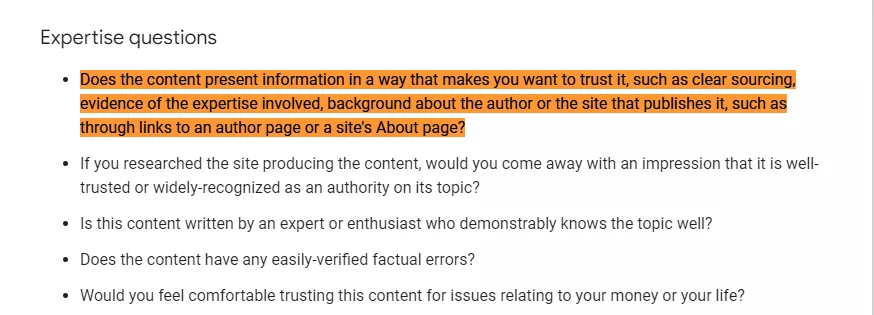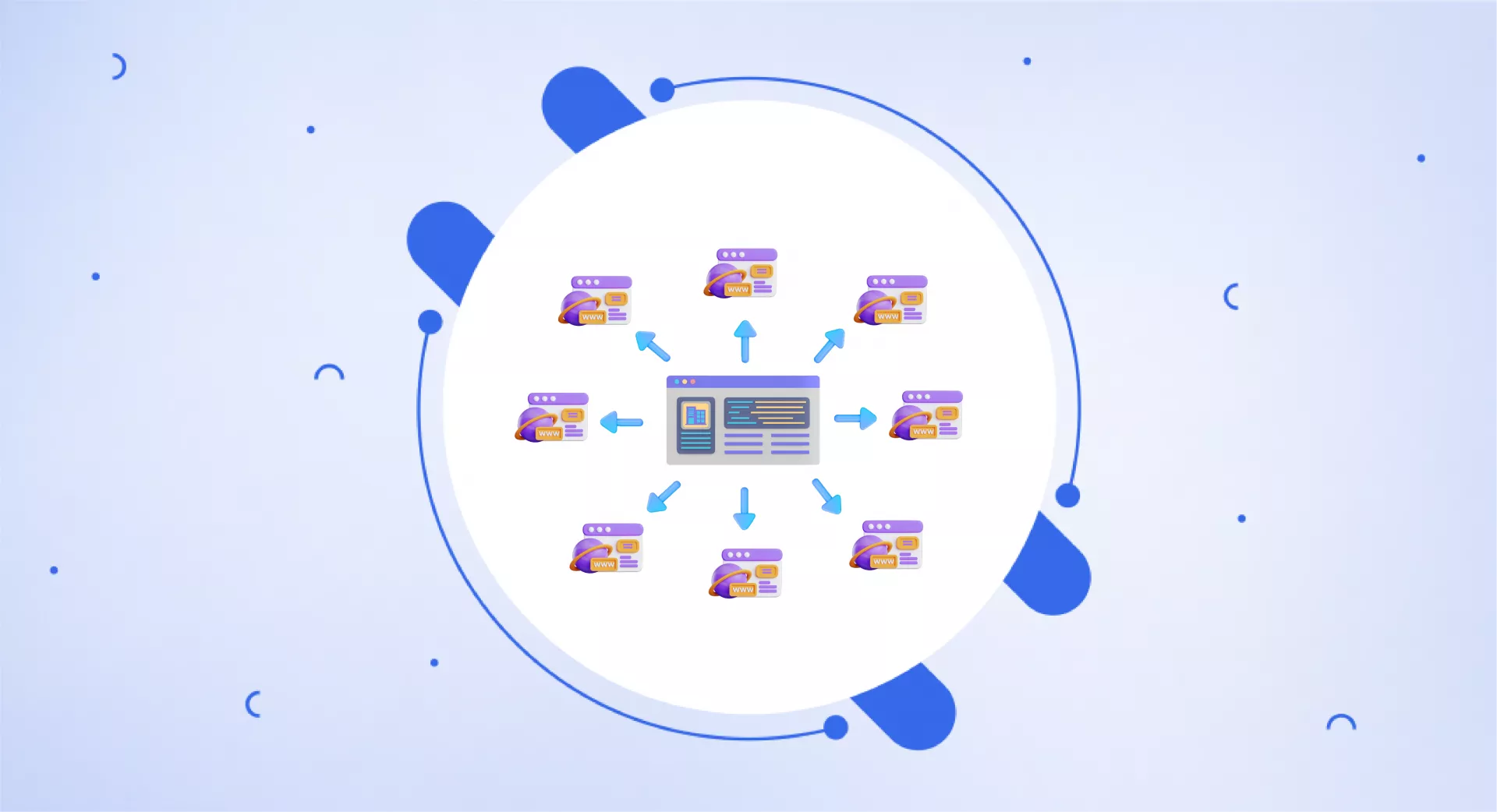What is Cross-linking?
Cross-linking means putting links from one website or page to another site or page. These are called external links.
Cross-links take users from your content over to another website or page with extra information related to your content.
Using cross-links is important in SEO. It can help make your site seem more authoritative and trustworthy. However, the links should add value for users in a natural way.
So cross-linking connects your site to outside resources through external links. It should aim to enhance the user experience by providing supplemental info from other quality sites. Done right, crosslinking builds site credibility and aids SEO.
Benefits of Cross-linking
Crosslinking is often overlooked in SEO strategies, but it should be considered for several reasons.
It can improve user experience, signal relevance to search engines, and foster relationships with other websites. Here is why should consider crosslinking in your SEO strategy.
Enhance SEO and content depth
Cross-linking improves a site's SEO and gives search engines more context about the content.
By linking related information on other sites, you show Google your content connects to those topics.
This helps strengthen your pages' topical relevance signals. It tells search engines your pages offer useful info around those subjects.
Additionally, cross-links provide added value for readers by linking them to more resources to learn. This gives more depth, especially for complex topics.
Referring readers to quality external sites also boosts your own content's authority and credibility.
So using outbound links naturally supplies readers with extra helpful material. This simultaneously makes pages more meaningful to search engines.
Don't hesitate to cross-link when relevant. Doing so can greatly improve content quality, usefulness and performance.
Maximize content value
Cross-linking your content to other sites boosts its quality and gives readers more value.
Unlike some myths, outbound links don't hurt your website's SEO or reputation. Actually, they can help in several ways.
Linking to other sites is great for users. Links let people learn more, check sources, and see how your information connects to their questions.
So adding relevant cross-links makes your content more useful. Readers can dig deeper into topics they care about via the external sites you link to. This makes for a better experience.
Build trust with your readers
In today's world of fake news, writers must focus on building trust with readers. One way is citing sources and using cross-links.
By linking to your sources, you give credit to the original information creators. This lets readers verify the facts themselves if they want.
Enabling readers to check your info sources makes them evaluate if your content seems credible and reliable. This cultivates reader trust.
But it helps to link directly to the most authoritative, trusted version of any data you can.
Sometimes sites reuse information from elsewhere. Pointing to the original boosts credibility.
So cross-linking to quality sources allows readers to assess content accuracy themselves. This transparency creates reader faith in your writing.
Demonstrates expertise
Crosslinks, which direct users from one website to another, can demonstrate expertise in a field, closely tied to the concept of E-EAT (experience, expertise, authority, and trustworthiness). Expert websites are more likely to link to authoritative sources in their content.
Linking to reputable sources indicates the author's knowledge and experience. It shows that they have made an effort to research and validate information - building trust with users.
Outbound links provide further context and evidence, enhancing the authority and reliability of the web page.
Google encourages webmasters to ask themselves a question while analyzing their content:

Things to Avoid in Cross-linking
There are several things to avoid in cross-linking, including:
Excessive cross-linking
Cross-linking should be used in a natural and strategic way that provides value to the user. Excessive or spammy cross-linking can be seen as a manipulative tactic by search engines and may result in penalties or lower rankings.
Avoid including a link to the same site on every page
When every page on your website includes a link to the same site, it can raise red flags for search engine crawlers.
This could be seen as unnatural or spammy behaviour, which may result in penalties or lower rankings in search results.
Additionally, having the same link on every page can dilute the quality of the links, as search engines may interpret them as repetitive or irrelevant.
Linking to irrelevant content
Cross-linking should be done between related content. Linking to irrelevant content can confuse users and harm the website's SEO performance.
Using manipulative tactics
Cross-linking should be used to improve the user experience and provide value to website visitors. Using manipulative tactics, such as selling links or participating in link schemes, can harm the website's SEO performance.
Avoid creating a "link ring"
A “link ring” is a practice where multiple sites link to each other but do not include links to other relevant websites. This is also considered unnatural and can result in penalties from search engines.
It's important to create a balanced and diverse linking strategy for your website that points to relevant and authoritative websites, rather than engaging in manipulative link schemes.
Not checking for broken links
Broken links can harm the user experience and the website's SEO performance. It's important to regularly check for broken links and fix them promptly.
By avoiding these common mistakes, cross-linking can be used effectively to improve the user experience and the website's SEO performance.
What To Do Instead?
While crosslinking your website to others, it is important to keep it natural and relevant.
Use keyword-rich anchor text
When linking out to other websites, use anchor text that contains relevant keywords. This can provide more context and information to search engine crawlers about the content of the linked page, which can help improve the relevance and ranking of your website in search results.
However, be cautious not to overuse keywords or create unnatural or spammy anchor text, as this can also be a negative signal.
Keep them natural
When adding links to your website, it's important to consider their placement in a way that makes sense and feels natural to your visitors.
Relevant and contextual links that align with the content or topic of the page can be more likely to be clicked on and followed by visitors.
On the other hand, if links are placed in a way that feels forced, irrelevant, or overly promotional, visitors may be less likely to click on them or even view them as potentially spammy.
Track and fine-tune your strategy
It's essential to monitor and evaluate the performance of your cross-linking strategy using data such as the use of Google Analytics.
This may involve tracking metrics such as click-through rates, conversion rates, and engagement metrics for the cross-linked content.
This can help you identify what works and what doesn't, and make adjustments to optimize your results.
Successful cross-linking can improve your website's visibility and rankings in your niche, but it's important to continuously assess and improve your strategy based on data-driven insights.
Takeaway
Cross-linking is the practice of linking your website or a page to another website or page via external links. It can improve user experience, signal relevance to search engines, and foster relationships with other websites.
Crosslinking enhances SEO and content depth by providing context and credibility to your content. It also maximizes content value by adding additional resources for readers to learn more about the topic.
It's important to use cross-linking in a natural and strategic way that provides value to the user and avoids spammy or manipulative behaviour.
Regularly checking and monitoring the crosslinking strategy is also important to maintain a positive user experience and SEO performance.


